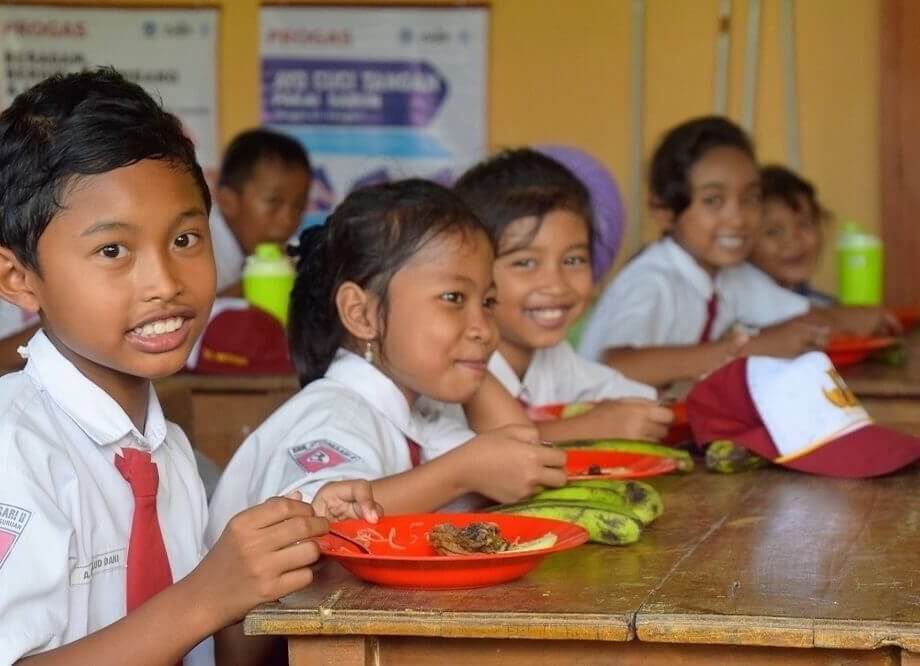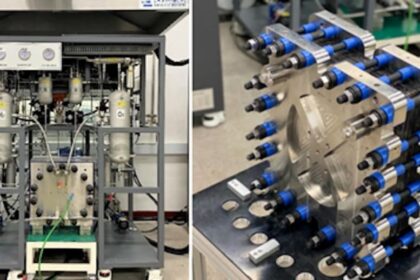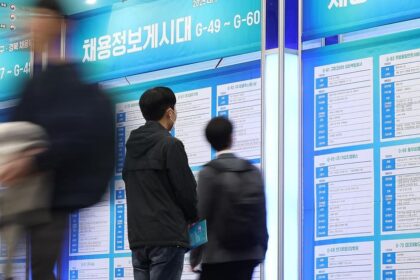Indonesia’s Free Meals Program: Ambition, Austerity, and Controversy
Indonesia’s ambitious free meals program, a signature policy of President Prabowo Subianto, has become one of the world’s most expensive social initiatives, aiming to provide nutritious meals to up to 83 million people, including schoolchildren, young children, and pregnant or breastfeeding women. While the program is designed to combat malnutrition and stunting, its massive scale, funding strategy, and implementation challenges have sparked heated debate, public protests, and concerns about its long-term impact on Indonesia’s economy and society.
- Indonesia’s Free Meals Program: Ambition, Austerity, and Controversy
- What Is Indonesia’s Free Meals Program?
- Budget Cuts and Fiscal Trade-Offs: How Is the Program Funded?
- Economic and Social Impact: Growth, Deficit, and Public Reaction
- Implementation Challenges: Logistics, Food Safety, and Private Investment
- Food Safety and Quality Concerns
- Corruption Risks and Governance Challenges
- Is the Free Meals Program the Right Solution?
- Broader Implications: Political, Social, and Economic Risks
- In Summary
What Is Indonesia’s Free Meals Program?
Launched in early 2025, the Free Nutritious Meal (Makan Bergizi Gratis, or MBG) program is intended to deliver five meals per week to millions of Indonesians, primarily targeting students, children under five, and expectant or nursing mothers. The initiative is part of President Prabowo’s vision to improve the nation’s human capital, reduce stunting rates, and support Indonesia’s goal of becoming a developed country by 2045.
Stunting—a condition caused by chronic malnutrition that impairs physical and cognitive development—affects about one-fifth of Indonesian children under five. The government hopes that by providing free, nutritious meals, it can help children grow taller, learn better, and ultimately contribute to the country’s economic progress.
Budget Cuts and Fiscal Trade-Offs: How Is the Program Funded?
Initially, the program was projected to cost as much as 450 trillion rupiah (about US$28 billion) annually, making it the world’s second-most expensive free meals initiative after the United States. However, in mid-2025, the government announced a 22% reduction in planned spending for 2026, lowering the budget to 350 trillion rupiah (US$21.4 billion) after revising ingredient cost estimates and recalibrating the rollout. This year’s expenditures are expected to total about US$7.5 billion, a 29% reduction from earlier plans.
To finance the program, President Prabowo ordered sweeping budget cuts across government ministries and regional allocations, amounting to 306.7 trillion rupiah (about US$19.5 billion). These austerity measures have affected a wide range of sectors, including public works, health, education, and research. For example, the Ministry of Public Works saw an 80% budget cut, while the Health Ministry lost 18.56% of its funding. The Ministry of Higher Education, Science, and Technology redirected research funds to support the meals program, and the National Library reduced its operating hours.
Finance Minister Sri Mulyani Indrawati emphasized that the cuts were intended to prioritize programs with direct public benefits, such as the free meals initiative. However, the reallocation has led to widespread concerns about the impact on essential services, government operations, and Indonesia’s fiscal health.
Economic and Social Impact: Growth, Deficit, and Public Reaction
Supporters of the program argue that it will boost economic growth by stimulating demand for local food products, creating jobs, and improving the health and productivity of future generations. According to a presidential adviser, the additional budget for free meals could add nearly two percentage points to Indonesia’s GDP growth this year, helping the country reach its 5.2% growth target.
However, financial markets and analysts have expressed concern about the program’s cost and its effect on Indonesia’s reputation for fiscal prudence. Nomura Holdings forecasts a fiscal deficit of 2.9% of GDP this year, close to the legal limit of 3%, citing weak economic growth, low commodity prices, and accelerated spending on the free meals program. The government is expected to announce a wider deficit outlook in its midyear budget review.
The austerity measures have also triggered public protests, particularly among students and civil society groups. The “Dark Indonesia” (Indonesia Gelap) movement, led by university students, has staged demonstrations in major cities, decrying cuts to education, scholarships, and public services. Protesters argue that while children may eat for free, the broader population faces job losses, reduced social support, and a dimmer future. The protests have become the first major political challenge for President Prabowo’s administration, with some demonstrations turning violent and sparking national debate about the government’s priorities.
Implementation Challenges: Logistics, Food Safety, and Private Investment
Rolling out a program of this scale in a country as vast and diverse as Indonesia has proven daunting. The government aims to reach all 83 million intended recipients by the end of 2025, a sixteen-fold increase from the current 5 million. This requires a massive expansion of kitchen facilities, food supply chains, and distribution networks across more than 17,000 islands.
One of the biggest hurdles is sourcing enough food locally. The program relies on eggs, chicken, fish, vegetables, and fruit from domestic producers. However, demand for milk is expected to outstrip supply, prompting plans to import up to 1.5 million dairy cows from countries such as Australia, New Zealand, Brazil, the US, and Europe—potentially tripling Indonesia’s existing herd. Officials acknowledge that while there are no immediate shortages, ramping up local production will take time.
Private investment is crucial for building and operating the estimated 32,000 kitchens needed to prepare and distribute meals. Yet, fewer than 1,900 are currently in operation, and investors remain wary. Each kitchen can cost up to US$183,000 and may take two years to break even. As Aditya Perdana, a political lecturer at the University of Indonesia, explains:
“People aren’t convinced with the investment model and prefer to just wait and see the progress.”
To accelerate the rollout, the government plans to deploy 30,000 university graduates as kitchen managers. Still, logistical challenges—such as food delivery across remote areas, maintaining freshness, and ensuring timely distribution—persist.
Food Safety and Quality Concerns
Food safety has emerged as a major issue, with several high-profile cases of food poisoning linked to the program. In Cianjur, south of Jakarta, nearly 80 students were hospitalized after eating meals with an unpleasant odor. Investigations pointed to negligent food preparation, and authorities have pledged to improve safety protocols. Since the program’s launch, at least eight incidents of food poisoning have been reported, affecting both students and staff.
Some students have complained about the quality of the meals, describing them as bland, stale, or unfit for consumption. Reports have surfaced of teachers confiscating students’ phones to prevent them from sharing photos of the food online, and some caterers have withdrawn from the program due to delayed payments and cash flow problems.
Experts and analysts have criticized the hasty implementation and lack of detailed standards for cleanliness, nutrition, and food safety. The Center for Indonesia’s Strategic Development Initiatives (CISDI) noted that the National Nutrition Agency has limited authority to coordinate with local governments, hampering effective oversight. Nutritionist Tan Shot Yen warned that rolling out the program too quickly, without adequate grassroots engagement, risks food waste and poor outcomes.
Corruption Risks and Governance Challenges
Large-scale social assistance programs in Indonesia have historically been vulnerable to corruption, and the free meals initiative is no exception. Allegations of embezzlement, missed payments to vendors, and lack of transparency have already surfaced. In one case, a meal provider in South Jakarta accused authorities of failing to reimburse nearly a billion rupiah spent on school lunches, prompting a police investigation. The National Anti-Corruption Bureau has flagged the “real possibility” of fraud, given the program’s enormous budget.
President Prabowo has vowed to address these issues and safeguard public funds, but skepticism remains. As Muhammad Rafi Bakri, a research analyst at Indonesia’s audit board, observes:
“Given the sheer size of the budget, this program is a goldmine for corrupt officials.”
Is the Free Meals Program the Right Solution?
While the program’s goals—improving nutrition, reducing stunting, and supporting human capital—are widely supported, critics question whether the MBG is the most effective or efficient approach. Previous government initiatives, such as the Posyandu community health posts, the Family Welfare Card (KKS) cash transfer program, and the Complementary Food Program (PMT), have targeted malnutrition with varying degrees of success. Some experts argue that scaling up these existing programs, rather than launching a costly new initiative, would be more prudent.
Moreover, national surveys indicate that only about 1% of Indonesian households experienced a day without meals in the past year, and less than 8% reported lacking access to nutritious food due to financial constraints. This suggests that while malnutrition remains a concern, widespread starvation is not the primary issue. Improving the quality of diets, rather than simply providing more food, may be a more targeted solution.
There are also concerns about the program’s “universal” approach, which may not address local nutritional needs or account for regional differences in food availability and dietary habits. For example, the plan to provide milk has been complicated by high rates of lactose intolerance and limited domestic production. Relying on centralized kitchens, rather than empowering local small businesses, may also undermine the program’s intended economic benefits and adaptability.
Broader Implications: Political, Social, and Economic Risks
The free meals program has become a lightning rod for broader debates about Indonesia’s development priorities, fiscal management, and social contract. While President Prabowo remains popular, with approval ratings near 80%, the protests and public backlash highlight growing unease about the trade-offs involved in funding such a massive initiative.
Students and civil society groups worry that cuts to education, research, and public services will undermine Indonesia’s long-term prospects, even as the government pursues high-profile projects like the free meals program and an $80 billion sea wall off Java’s coast. The austerity measures have led to reduced government services, cancelled scholarships, and even restrictions on air conditioning and lighting in public offices.
Analysts warn that if economic conditions worsen or living costs rise, public discontent could escalate, posing a challenge to the government’s stability and reform agenda. The experience of past student-led movements in Indonesia suggests that sustained protests can have significant political impact if they resonate with broader segments of society.
In Summary
- Indonesia’s free meals program is one of the world’s largest and most expensive social initiatives, aiming to serve up to 83 million people.
- The program’s budget has been cut by 22% for 2026, but it remains a major fiscal commitment, funded by sweeping austerity measures across government sectors.
- Implementation has been hampered by logistical challenges, food safety incidents, delayed payments, and difficulties attracting private investment.
- Public protests, especially among students, have erupted in response to budget cuts affecting education and other services.
- Experts question whether the program is the most effective way to address malnutrition and stunting, suggesting that scaling up existing initiatives may be more prudent.
- Corruption risks and governance challenges threaten to undermine the program’s effectiveness and public trust.
- The program’s success or failure will have significant implications for Indonesia’s economic growth, social stability, and development trajectory.












